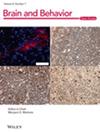Revisiting Late-Onset Bipolar Disorder Associated With Pituitary Adenoma: A Cross-Sectional, Multidisciplinary, Case-Based Analysis
Abstract
Objective
This study explores the diagnostic, treatment, and follow-up approaches of neurologists, psychiatrists, and family physicians in managing late-onset bipolar disorder (BD) in elderly patients, emphasizing the role of interdisciplinary collaboration.
Methods
A cross-sectional survey involved 300 specialists (100 from each discipline). The survey assessed diagnostic accuracy, treatment preferences, follow-up adherence, and barriers to interdisciplinary collaboration. A pairwise z-test with Bonferroni correction was applied for comparative analysis across specialties to evaluate differences in response proportions.
Results
Neurologists demonstrated high proficiency in imaging and treatment initiation (91% correct imaging responses) but faced challenges in holistic management and follow-up adherence (2%). Psychiatrists excelled in diagnosing organic causes of mood disorders (92%) and therapeutic decisions but struggled with non-priority diagnostic tests (44%) and long-term follow-up strategies (14%). Family physicians showed strong skills in pharmacological management (96%) and follow-up adherence (89%) but encountered barriers like stigma and referral timing for high-risk cases. Common interdisciplinary challenges included diagnostic communication, treatment coordination, and follow-up collaboration.
Conclusion
Late-onset BD management requires a multidisciplinary approach to address specialty-specific gaps and foster effective interdisciplinary collaboration. Enhanced training, integrated care models, and shared guidelines are recommended to optimize outcomes for elderly patients with mood disorders. Future research should focus on developing standardized protocols and evaluating the long-term impact of interdisciplinary interventions.


 求助内容:
求助内容: 应助结果提醒方式:
应助结果提醒方式:


